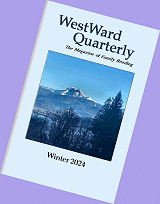Turning Prose into Poetry?
WestWard Quarterly welcomes submissions of all forms of poetry, as long as the poem meets our criterion of being uplifting or positive (at least, not negative). Some poetry submitted takes the form of traditional poetry that rhymes and has a metric scansion. However, many poems are “free,” in the sense that they do not have a metric “beat”and do not contain rhyme. In other words, if not laid out in a poetic form they could be read, just as well, as prose.
What makes such a “free” poem a poem, and not prose? Is it simply a matter of creating line breaks in the text, where a piece of prose would just run on in standard paragraph form?
In Validity in Interpretation (Yale University, 1967), E. D. Hirsch, Jr. cites a discussion that went on in the Times Literary Supplement in 1965, where a succession of letters to the editor addressed this very issue: “Can prose become poetry through typographical rearrangement?” One of the respondents started the discussion by quoting a passage from a semi-technical work on Chinese art, referencing also two well-known performing musicians of the time:
When a Chinese calligrapher ‘copies’ the work of an old master it is not a forged facsimile but an interpretation as personal within stylistic limits as a Samuel or Landowska performance of a Bach partita.
However, the writer didn’t present the sentence in that paragraph form. Instead, he laid it out in this manner:
When a Chinese calligrapher ‘copies’
The work of an old master it is not
A forged facsimile but an interpretation
As personal within stylistic limits
As a Samuel or Landowska performance
Of a Bach partita.
The ensuing discussion in the Times Literary Supplement dealt whether the prose passage had been turned into poetry by the rearrangement, or whether the resetting had simply mutilated a good piece of technical prose. Hirsch eventually concludes that the typographical rearrangement does, indeed, change the sentence from prose to poetry. When the syllable stress pattern (three accents per line) is considered, along with the pauses suggested by the breaks in the lines or by the reduction of syllables between stresses, then the character of the piece is altered:
When a Chinese calligrapher ‘copies’
The work of an old master it is not
A forged facsimile but an interpretation
As personal within stylistic limits
As a Samuel or Landowska perfformance
Of a Bach partita.
Hirsch writes,
In prose the passage could be purely a statement about the art of Chinese calligraphy, whereas in poetry the concentrating and symbolizing conventions of the genre lead us to expect wider implications, so that the Chinese calligrapher could imply not only Chinese calligraphy but all tradition-bound art. If we assume for the moment that my hypothetical interpretation is correct, we confront an interesting illustration of the reason that a given word sequence can represent more than one meaning. It can do so because almost any word sequence can be subsumed by more than one intrinsic genre and therefore can carry different implications.
In other words, the type of literature we perceive it to be leads us to interpret the meaning of a passage differently — a vastly important principle in gauging the meaning of any literary piece, such as a passage from the Bible.
I suspect, though, that the subject matter also has something to do with whether or not a piece of writing can be considered “poetry.” Consider this:
Seek medical attention right away
If any of these severe side effects occur:
Severe allergic reactions (rash; hives; itching;
Difficulty breathing; tightness in the chest;
Swelling of the mouth, face, lips, or tongue;
Unusual hoarseness); blurred vision or other vision changes
(E.g., decreased vision clearness); change in the amount
Of urine produced; chest pain or discomfort . . .
I consider it highly unlikely that the information sheet the pharmacist hands you along with your prescription medication would yield good “free” poetry, regardless of how you decide to lay out the text.
Happy Writing!
The Publisher
©2012 Laudemont Press


